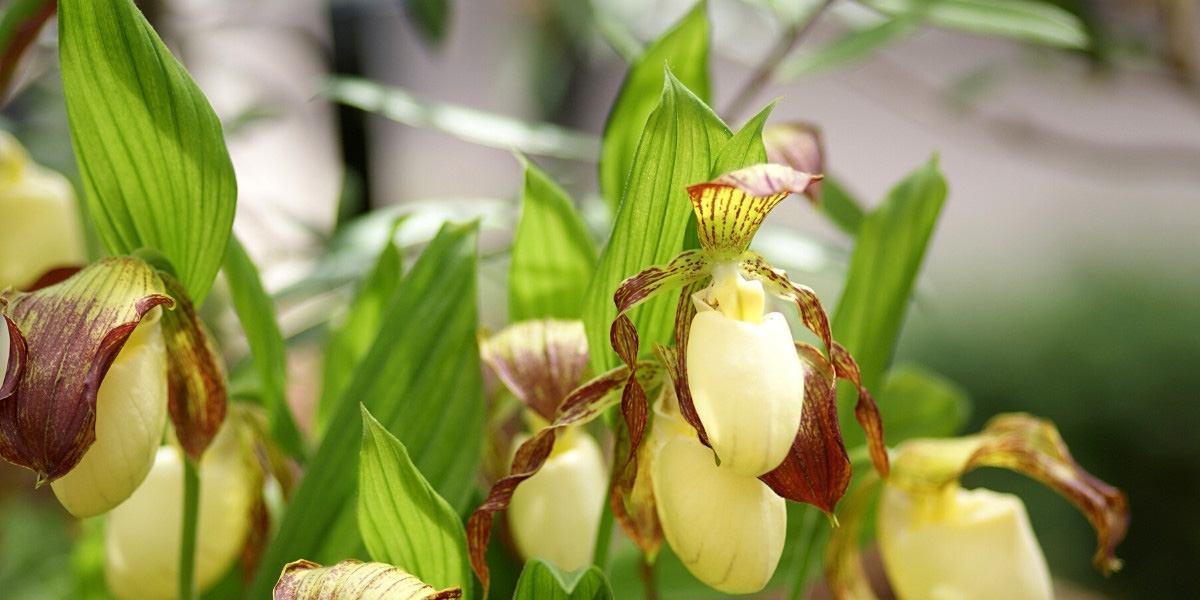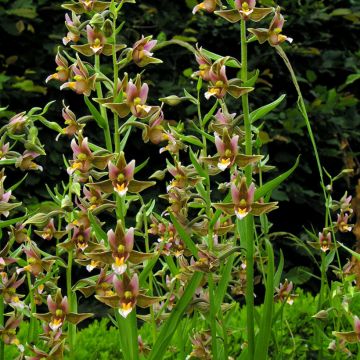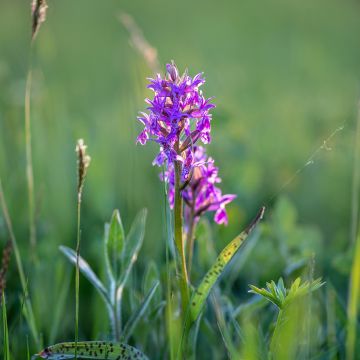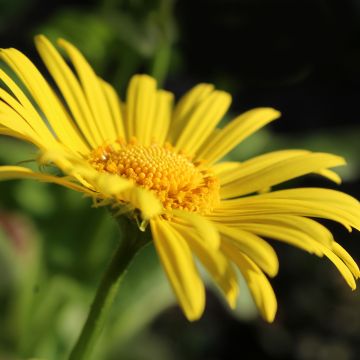

Cypripedium formosanum


Cypripedium formosanum
Cypripedium formosanum
Cypripedium formosanum
Formosan Lady's Slipper
I bought this young plant about a month ago and there is no sign of growth. Is this normal?
Martine , 08/04/2021
Special offer!
Receive a €20 voucher for any order over €90 (excluding delivery costs, credit notes, and plastic-free options)!
1- Add your favorite plants to your cart.
2- Once you have reached €90, confirm your order (you can even choose the delivery date!).
3- As soon as your order is shipped, you will receive an email containing your voucher code, valid for 3 months (90 days).
Your voucher is unique and can only be used once, for any order with a minimum value of €20, excluding delivery costs.
Can be combined with other current offers, non-divisible and non-refundable.
Home or relay delivery (depending on size and destination)
Schedule delivery date,
and select date in basket
This plant carries a 12 months recovery warranty
More information
We guarantee the quality of our plants for a full growing cycle, and will replace at our expense any plant that fails to recover under normal climatic and planting conditions.
Would this plant suit my garden?
Set up your Plantfit profile →
Description
Cypripedium formosanum, also known as the Formosan Lady's Slipper, is a terrestrial orchid that will delight enthusiasts. It is a hardy species with a beautiful spring flowering in pink and white shades. Becoming rare in its country of origin, it is one of the least difficult Lady's Slippers to acclimate with some precautions. Once well established, it will spread to form beautiful pastel patches in shaded borders.
Endemic to the mountains of central Taiwan, where it grows above 2000m (6562ft) altitude, Cypripedium formosanum is closely related to Cypripedium japonicum. These two species differ in terms of size, colour, and flower shape, and, importantly, ease of cultivation. In nature, the Formosan Lady's Slipper grows in forests and bogs.
Cypripedium formosanum is a deciduous herbaceous plant that develops from a slightly creeping rhizome. The rhizomes branch out and over time, this plant can form large colonies over extensive areas. It develops, in April-May, two large, fan-shaped, opposite, pleated leaves at the end of a slightly pubescent stem. This stem then elongates up to 40cm (16in) in height and gives birth to a solitary flower. The flower shows a swollen lip, with a channelled oval orifice, surmounted by white and pink sepals. The flowers are generally pale pink, but they are spotted and marbled with a deeper pink. These marblings form stripes near the orifice of the lip, and are also more pronounced at the base of the petals and dorsal sepals. The petals are particularly wide. Pure white forms exist, but they are very rare. Vegetation is absent in winter.
Cypripedium formosanum is a hardy mountain plant and relatively adaptable in the ground. It thrives in forest edges, in partial shade, in light, humus-rich, well-drained soils, slightly acidic to acidic, without limestone. The soil should not be waterlogged in winter, nor too dry in summer. Plant it in the shade in a cool rock garden between rocks or at the edge of a fresh understory alongside Arisaema, Calanthe, Paris, Bletilla, and ferns.
When you receive your orchids, handle them with care: these plants produce few roots and are delicate!
Flowering
Foliage
Plant habit
Botanical data
Cypripedium
formosanum
Orchidaceae
Formosan Lady's Slipper
Southeast Asia
Other Garden Orchids
View all →Planting and care
Plant Cypripedium formosanum in partial shade, in a soil rich in humus and heather earth, light, without limestone, neutral to acidic. This terrestrial orchid does not tolerate heavy and waterlogged soils or dry soils. Add 1/3 turf and 1/3 non-limestone fine gravel to the planting mixture, which you will mix with topsoil. Water the plant without excess, making sure to keep the soil slightly moist in summer. Cypripediums are sensitive to fertilizers and do not like to be disturbed. Protect the stump during the first year with a layer of dead leaves 10cm thick. Pot cultivation is possible, but plants often produce many new shoots at the expense of flowering.
Planting period
Intended location
Care
Planting & care advice
-
, onOrder confirmed
Reply from on Promesse de fleurs
Similar products
Haven't found what you were looking for?
Hardiness is the lowest winter temperature a plant can endure without suffering serious damage or even dying. However, hardiness is affected by location (a sheltered area, such as a patio), protection (winter cover) and soil type (hardiness is improved by well-drained soil).

Photo Sharing Terms & Conditions
In order to encourage gardeners to interact and share their experiences, Promesse de fleurs offers various media enabling content to be uploaded onto its Site - in particular via the ‘Photo sharing’ module.
The User agrees to refrain from:
- Posting any content that is illegal, prejudicial, insulting, racist, inciteful to hatred, revisionist, contrary to public decency, that infringes on privacy or on the privacy rights of third parties, in particular the publicity rights of persons and goods, intellectual property rights, or the right to privacy.
- Submitting content on behalf of a third party;
- Impersonate the identity of a third party and/or publish any personal information about a third party;
In general, the User undertakes to refrain from any unethical behaviour.
All Content (in particular text, comments, files, images, photos, videos, creative works, etc.), which may be subject to property or intellectual property rights, image or other private rights, shall remain the property of the User, subject to the limited rights granted by the terms of the licence granted by Promesse de fleurs as stated below. Users are at liberty to publish or not to publish such Content on the Site, notably via the ‘Photo Sharing’ facility, and accept that this Content shall be made public and freely accessible, notably on the Internet.
Users further acknowledge, undertake to have ,and guarantee that they hold all necessary rights and permissions to publish such material on the Site, in particular with regard to the legislation in force pertaining to any privacy, property, intellectual property, image, or contractual rights, or rights of any other nature. By publishing such Content on the Site, Users acknowledge accepting full liability as publishers of the Content within the meaning of the law, and grant Promesse de fleurs, free of charge, an inclusive, worldwide licence for the said Content for the entire duration of its publication, including all reproduction, representation, up/downloading, displaying, performing, transmission, and storage rights.
Users also grant permission for their name to be linked to the Content and accept that this link may not always be made available.
By engaging in posting material, Users consent to their Content becoming automatically accessible on the Internet, in particular on other sites and/or blogs and/or web pages of the Promesse de fleurs site, including in particular social pages and the Promesse de fleurs catalogue.
Users may secure the removal of entrusted content free of charge by issuing a simple request via our contact form.
The flowering period indicated on our website applies to countries and regions located in USDA zone 8 (France, the United Kingdom, Ireland, the Netherlands, etc.)
It will vary according to where you live:
- In zones 9 to 10 (Italy, Spain, Greece, etc.), flowering will occur about 2 to 4 weeks earlier.
- In zones 6 to 7 (Germany, Poland, Slovenia, and lower mountainous regions), flowering will be delayed by 2 to 3 weeks.
- In zone 5 (Central Europe, Scandinavia), blooming will be delayed by 3 to 5 weeks.
In temperate climates, pruning of spring-flowering shrubs (forsythia, spireas, etc.) should be done just after flowering.
Pruning of summer-flowering shrubs (Indian Lilac, Perovskia, etc.) can be done in winter or spring.
In cold regions as well as with frost-sensitive plants, avoid pruning too early when severe frosts may still occur.
The planting period indicated on our website applies to countries and regions located in USDA zone 8 (France, United Kingdom, Ireland, Netherlands).
It will vary according to where you live:
- In Mediterranean zones (Marseille, Madrid, Milan, etc.), autumn and winter are the best planting periods.
- In continental zones (Strasbourg, Munich, Vienna, etc.), delay planting by 2 to 3 weeks in spring and bring it forward by 2 to 4 weeks in autumn.
- In mountainous regions (the Alps, Pyrenees, Carpathians, etc.), it is best to plant in late spring (May-June) or late summer (August-September).
The harvesting period indicated on our website applies to countries and regions in USDA zone 8 (France, England, Ireland, the Netherlands).
In colder areas (Scandinavia, Poland, Austria...) fruit and vegetable harvests are likely to be delayed by 3-4 weeks.
In warmer areas (Italy, Spain, Greece, etc.), harvesting will probably take place earlier, depending on weather conditions.
The sowing periods indicated on our website apply to countries and regions within USDA Zone 8 (France, UK, Ireland, Netherlands).
In colder areas (Scandinavia, Poland, Austria...), delay any outdoor sowing by 3-4 weeks, or sow under glass.
In warmer climes (Italy, Spain, Greece, etc.), bring outdoor sowing forward by a few weeks.



























































